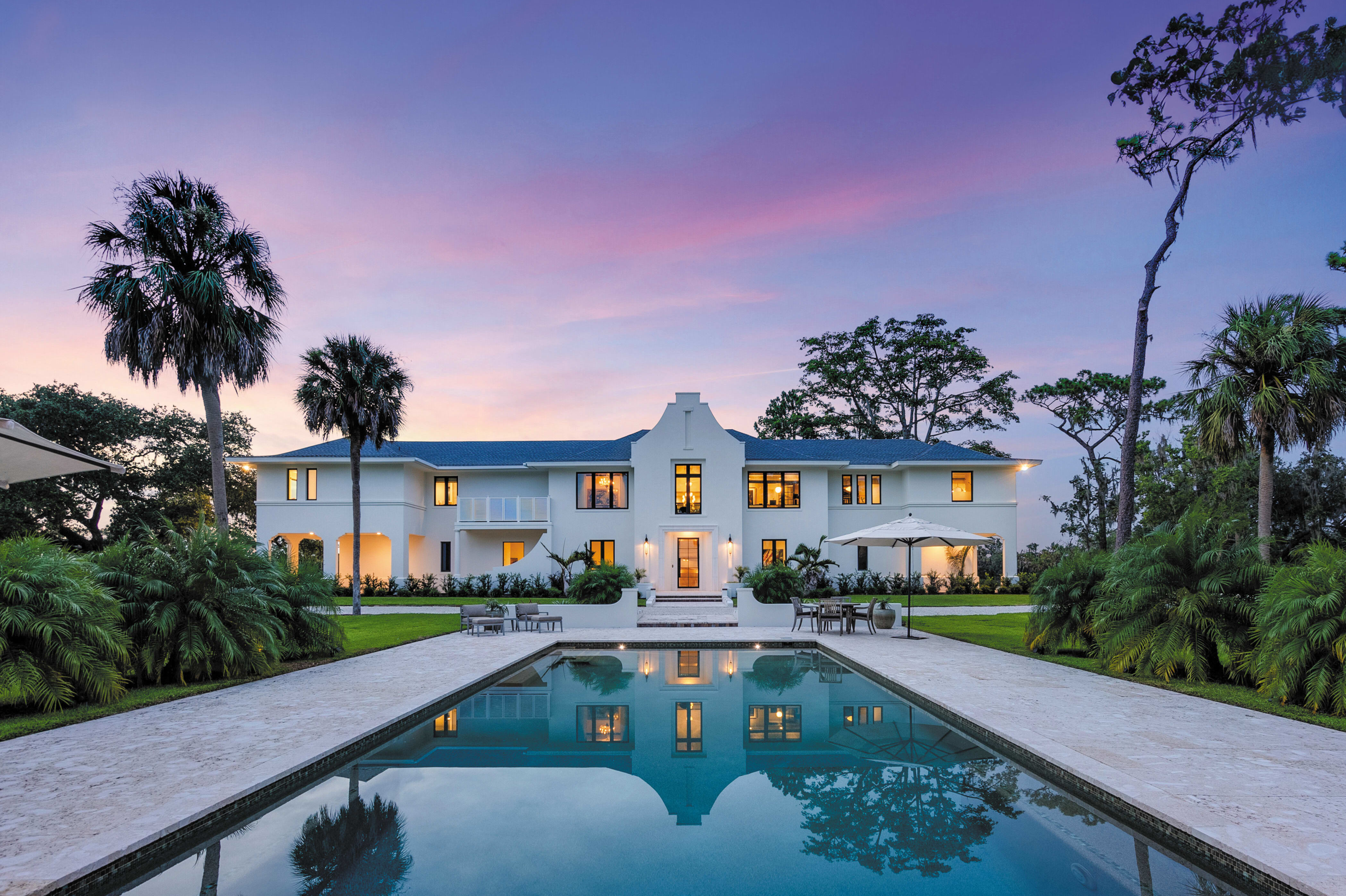Where and How to Observe Manatees in the Wild

Florida manatees, photo, courtesy DiscoverCrystalRiverFl.com
Image: Robin Draper
One of most unique things to do in Florida is to observe manatees in the wild. A good place to begin is in Citrus County, known as the Manatee Capital of the World.
Visitors to the Sunshine State may have peered through a glass window or into an enclosed tank to observe Florida’s official state marine mammal, the manatee. But did you know that there are places you can see these magnificent creatures in the wild?
Observing manatees is one of many unique things to do in Florida, and is often found at the top of many bucket lists.
So, where can you observe (and even swim near) a manatee?
On Florida’s Gulf coast, north of Tampa and west of Orlando, is Citrus County. It is the world’s largest natural winter refuge for the West Indian Manatee, no wonder it is known as the Manatee Capital of the World. The manatees are attracted to the area because of its abundance of freshwater springs.
Citrus County offers many observation points and is one of the few locations in Florida where you can legally observe manatees from within the water. Local tour guides are specially trained to make the experience safe for both you and the endangered species.
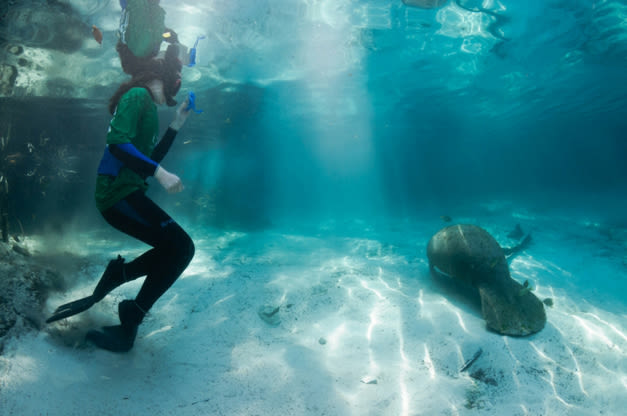
Florida manatee, photo, courtesy DiscoverCrystalRiverFl.com
Image: Robin Draper
Often called “gentle giants” these slow-moving, 1,000-lb., 10-feet-long, grayish-brown creatures are related to the elephant, as evidenced by their thick, leathery wrinkled skin. They congregate near the springs, especially from November through March when the water temperature in the Gulf and bays dip below 68 degrees, requiring them to seek the warmer 72-degree spring water.
The privilege of enjoying these wondrous creatures takes a very special effort by local officials to balance and protect the fragile habitat of the manatee, to accommodate the tourism demand and to provide an educational effort and guidelines for proper behavior around these endangered animals.
Ivan Vicente of U.S. Fish & Wildlife Service, a specialist in manatee behavior, says, “The best way to interact with manatees is through ‘passive observation’ and that means observing these wild animals from a distance without initiating contact. Manatees are used to humans and are not scared of us, but they are wild animals and are very curious. They should be respected in their habitat.”
Local officials have even created a video called Manatee Manners that is recommended before swimming with manatees and is part of the conservation protocol for anyone who enters a manatee habitat.
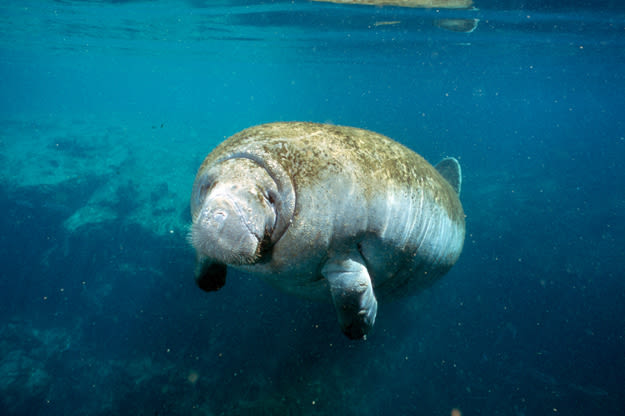
Florida manatee, photo courtesy, William Garvin
Image: Robin Draper
Kings Bay
Kings Bay is the largest spring system in Citrus County, and is composed of more than 70 individual springs producing a total of 240 million gallons of freshwater a day. It flows westward into the 7-mile long Crystal River, eventually discharging into the Gulf of Mexico.
The main spring is Kings Spring, also known as the “Key Hole.” It is the largest spring in Kings Bay and is where you’ll find the largest aggregation of manatees. It is also one of the few locations where you can swim, snorkel and drift along with these gentle giants.
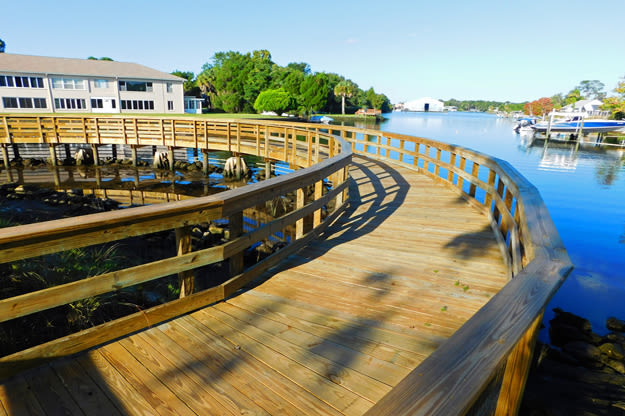
Hunter Springs, photo courtesy, DiscoverCrystalRiverFl.com
New Observation Walkway
If you would rather walk than swim to see manatees try Hunter Springs. This local city park has just undergone a facelift with a new walkway providing manatee viewing opportunities. There is also expanded parking, a kayak launch and a newly constructed beach area.
Three Sisters Springs
Three Sisters Springs, tucked away in one of the last undeveloped tracts in Crystal River, is a collection of three springs feeding into Kings Bay. Considered to be one of Florida’s most visually stunning springs, its translucent blue hues create an “other-worldly” feel. Shafts of sunlight pierce through the lush overhanging greenery into glittering crystal clear water that bubbles up from the sandy bottom as manatees gently glide below the surface. A boardwalk with viewing platforms gives visitors a perfect vantage point. Swimmers can enter the springs, but only if traveling by boat (not from the park) and observe the manatees up close. But when the cold snaps occur manatees take priority over humans and swimmers may not enter the enclosed area.
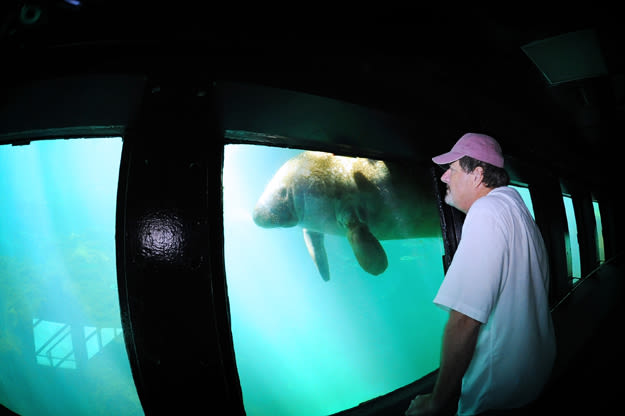
Fish Bowl, Homosassa Springs Wildlife Park, photo courtesy, DiscoverCrystalRiverFl.com
Image: Robin Draper
Homosassa Springs Wildlife State Park
The headspring is located at the Ellie Schiller Homosassa Springs Wildlife State Park, an attraction that has drawn tourists since the early 20th century. This spring system pumps 65 million gallons a day from three spring vents into the Homosassa River flowing to Homosassa Bay and the Gulf of Mexico.
Manatees can be viewed several ways, the most popular being the Park’s “fishbowl” underwater observatory where you can view manatees face-to-face through glass windows. The park also hosts three daily programs where you can learn about the manatee and the center’s role as refuge and rehabilitation center for injured and orphaned manatees. Additionally, a pavilion provides viewing of a protected area called Blue Water, where many manatees congregate.
Chassahowitzka Springs
In southern Citrus County, the five-mile Chassahowitzka (Chass-a-how-itz-ka) River, “Chaz” to locals, is a stunning river fed by several tributaries and springs, and is one of the ecologically healthiest in the region. A dozen springs form a first magnitude system at its headwaters. Manatees are often seen near the Chassahowitzka River boat ramp and feeding along the riverbank. But be sure to paddle to the Seven Sisters Springs or journey up Baird Creek to “Maggie’s Crack,” another beloved local spring.
Go with a Manatee Tour
The best way to experience a manatee encounter is to go with a tour. These groups will help you experience the gentle giants above or below the water.
Native Vacations Tours in Homosassa has a theme: “Do Something Real Today” and that is exactly what Traci Wood decided to do when she created her company specializing in manatee tours.
Wood provides a range of tours for visitors to enjoy the experience of swimming with manatees. Tours begin with a viewing of the Manatee Manners video to acquaint the guests with the appropriate behavior for swimming around manatees. “We remind people to be careful when entering the water, avoiding splashing or startling the manatees. The rule is to let manatees approach you,” shares Wood. Guests are then driven to the dock to board a boat for a 20-25 minute ride to an area where manatees congregate. “We want this experience to be special for each group, so we have five boats going to different areas.” We have tours at 8:00 am, 11:30 am and during the winter we add a 3:00 pm tour. Tours run more than 3 hours at $60 per person and private tours run $85 per person. For more time in the water six-hour private tours include lunch and are set at $119 per person.
Aardvark Tours: Kayak & Paddleboard Tours
Aardvark Tours, located on the Crystal River is run by biologist Matt Clemons who specializes in area eco tours by kayak or paddleboard. Tours range from 2-4 hours, where visitors are likely to see manatees, but are able to observe them from above the water rather than being immersed under the water with the manatees. Clemons’s philosophy is to be respectful of all wildlife with passive observation, “reducing the impact on all wildlife.” Matt knows that manatees are the “stars” when visiting Citrus County, and includes paddling adventures to see manatees but “there is so much more wildlife to see in addition to manatees.” Clemons provides customized kayak tours that include trips to the wild Chassahowitzka River where manatees are spotted. Tours range from $50-100 per person.
There are many ways to observe manatees. But there are specific rules to remember:
First, manatees are more likely to be present during cool winter days, requiring the 72-degree warmer springs to elevate their body temperature. (Summer warm weather reduces your chance to see a manatee.) Be sure to call ahead to inquire about it is a good time and what the chances are for seeing manatees.
Ivan Vicente of the FWS recommends the following, “When swimming with manatees, enter the water calmly, glide on the surface and give them appropriate space. Remember they are in their wild habitat; they do not need affection like a pet. We are entering their home and are their guests.”
For more information on visiting Citrus County: DiscoverCrystalRiverFl
To receive Authentic Florida’s free enewsletter, featuring travel and living updates, delivered weekly, sign up on the home page Authentic Florida, voted Blog of the Year and Best Travel Blog at the Orlando Sunshine Awards.
